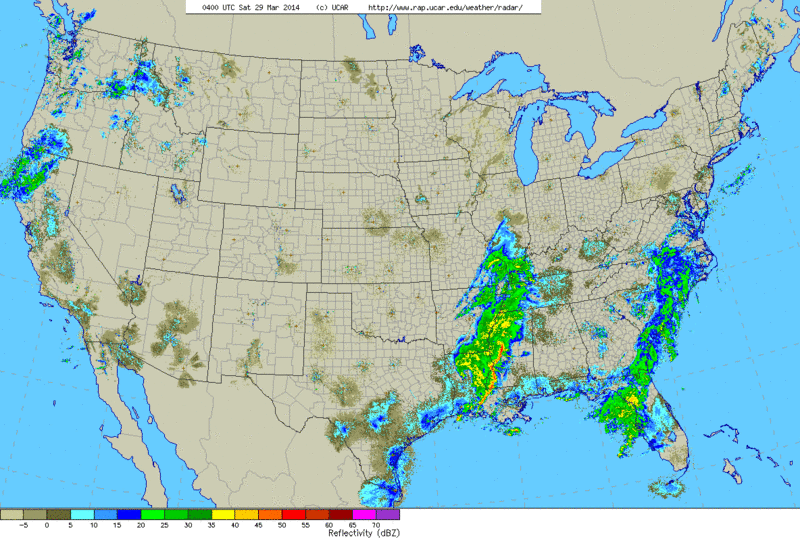Continental Summary
A mostly quiet West experienced scattered light to moderate movements, primarily in California and the Desert Southwest, while several disturbances in the East scattered light to moderate movements across the few favorable periods of the week. Species on the move this week included Osprey, Swainson’s Hawk, Franklin’s Gull, Great Crested Flycatcher, Eastern and Western Kingbirds, many swallows, Ruby-crowned Kinglet, Blue-gray Gnatcatcher, Nashville, Orange-crowned, Black-throated Gray, Palm and Prairie Warblers, Hooded, Scott’s and Orchard Orioles, and Lark, Chipping, and Field Sparrows.
 West
West
Light to moderate movements began the period in California and the Desert Southwest, as the rest of the region was mostly quiet. Although the movements continued in the Desert Southwest as the weekend wore on, movements shut down in most other areas as scattered precipitation kept migrants on the ground. Aside from some widely scattered and local light movements during the days that followed, migration was mostly at a stand still in many areas. However, Wednesday and Thursday nights saw the return of light to moderate movements from California through the Desert Southwest, as more favorable conditions returned. Species on the move this week included Osprey, Swainson’s Hawk, Franklin’s Gull, Western Kingbird, Cassin’s Vireo, Barn and Cliff Swallow, Nashville, Orange-crowned and Black-throated Gray Warblers, Common Grackle, Black-headed Grosbeak, Yellow-headed Blackbird, and Hooded and Scott’s Oriole.
Great Plains
Light to moderate movements in the central and southern Plains highlighted an otherwise quiet weekend for migration. Furthermore, the passage of low pressure on Sunday night shut down the system completely across the region to begin the work week. The situation did not improve much over the remainder of the period, as several disturbances, including some very severe storms, passed through the region and kept most birds grounded. Note that only in the southernmost reaches of the region was any substantive movement, most light to locally moderate, occurring. Species on the move this week included Snow Goose, Blue-winged Teal, Rough-legged Hawk, Sandhill Crane, Franklin’s Gull, Scissor-tailed Flycatcher, Northern Rough-winged Swallow, Barn and Tree Swallows, Brown Thrasher, Northern Mockingbird, Ruby-crowned Kinglet, Blue-gray Gnatcatcher, and Lark, Chipping, Field, Lincoln’s and Vesper Sparrow.
Upper Midwest and Northeast
After the passage of a major low pressure system through the region, light to moderate movements finally returned to the western reaches by later in the weekend. And in advance of the next low moving through the Great Lakes, light to moderate movements continued in the central Mississippi River valley east through the central Appalachians. As favorable conditions associated with this front shifted east on Tuesday night, widespread moderate movements reached the coast. But the disturbance moving through the region finally shut down most movements away from the central Appalachians and mid Atlantic states by Wednesday night, with largely unfavorable conditions continuing across the region, away from those aforementioned zones of movement, on Thursday night. Species on the move this week included White-winged Scoter, Common Goldeneye, Greater Scaup, Common Merganser, Double-crested Cormorant, Osprey, Belted Kingfisher, Yellow-bellied Sapsucker, Northern Flicker, Eastern Phoebe, Barn and Tree Swallows, Brown Thrasher, Golden-crowned Kinglet, Louisiana Waterthrush, Palm Warbler, Snow Bunting, White-crowned, Chipping and Field Sparrows, and Brown-headed Cowbird.
Gulf Coast and Southeast
Strong storms in the Mississippi River valley and Florida associated with moving low pressure kept most birds on the ground on Friday night, although moderate coastal movements did occur across the region away from precipitation. Once the low passed, migration all but shut down, with local light movements scattered across the region. But by Sunday night slightly larger movements returned west of the Mississippi River, followed by much more extensive moderate and even locally heavy movements on Monday and Tuesday nights. Such movements continued on Wednesday and Thursday nights, although reduced in a number of areas of east Texas and the Florida Panhandle. Species on the move this week included Green-winged Teal, Redhead, Ring-necked Duck, Upland Sandpiper, Least Tern, Yellow-bellied Sapsucker, Chimney Swift, Great Crested Flycatcher, Eastern Kingbird, Red-eyed Vireo, Brown Thrasher, Prothonotary, Hooded, Kentucky, and Prairie Warblers, Indigo Bunting, Summer Tanager, and Orchard Oriole.




